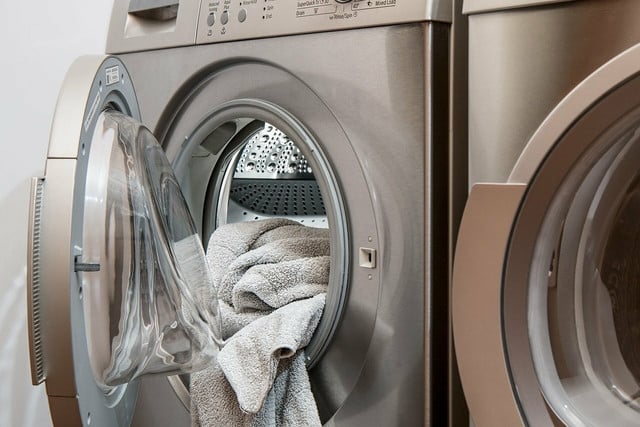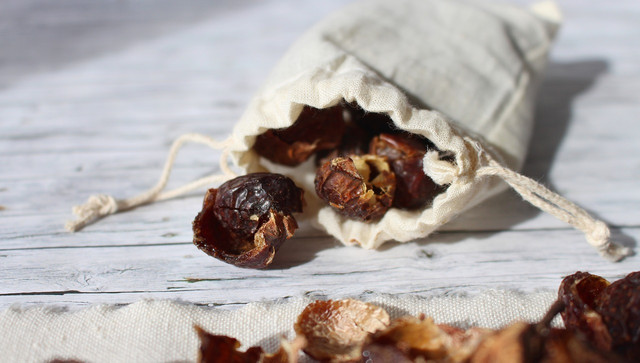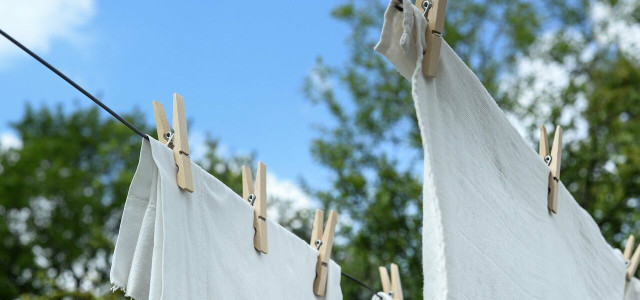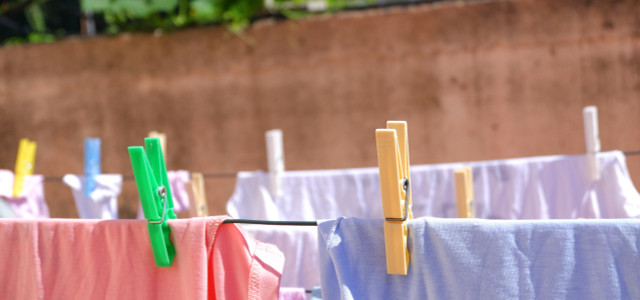In this article, we will discuss the purpose of fabric softeners, the problem with commercial products, and introduce alternative recipes for all-natural homemade fabric softeners.
In the early 20th century, the textile industry wanted a solution for the harsh feeling of cotton fibers post-dying. Cotton softeners came about in the early 1900s as a result.
In recent years, fabric softeners have been marketed as an essential ingredient in our laundry routines for their softening, wrinkleless, and freshening properties.
But what if fabric softeners are actually harming your health and the environment?
How Fabric Softeners Work

(Foto: CC0 / Pixabay / stevepb)
Commercial fabric softeners coat the surface with electrically charged chemical compounds that make fabrics feel softer by causing the threads to “stand up” from the surface. This slippery film makes contact with your skin when using your freshly washed products such as clothes, bedsheets, or towels.
What’s the Problem with Commercial Fabric Softeners?
Fabric softeners are made with a powerful combination of chemicals, such as quats and phthalates, that can harm your health, damage the environment and pollute the air, both inside and outside of your home.
Besides this, the plastic jugs many are packaged often don’t get recycled after.
Are They Even Effective?
Traditional fabric softeners often come in the way of the moisture-wicking abilities of some materials, sometimes even causing a build-up on the outside of clothes. This build-up can prevent detergent from properly cleaning clothes and leave them more susceptible to stains, or odors.
They can also create problems with your washing machine and its effectiveness by leaving a residue that may congest over time.
Alternatives to Conventional Fabric Softener



(Foto: CC0 / Pixabay / Monfocus)
Shop-bought fabric softener is often made using dangerous chemicals which are not sustainable, damaging when in contact with your skin and to inhale. Plus after a while, they could actually do more harm than good to your clothes.
Homemade fabric softener is one of the easiest DIY hacks you can do at home. A multitude of natural and sustainable options are there for your perusal.
Here are two of our favorite recipes:
1. DIY Fabric Softener with Epsom Salt & Essential Oils
Ingredients
- 4 cups Epsom salt
- 40 drops of essential oil of your choice
Instructions
- Mix the Epsom salt with your chosen essential oil for your perfect homemade fabric softener.
- Sprinkle 1-2 tablespoons into your wash to soften your clothes.
2. Using Homemade Conditioner for Your Fabrics
Ingredients
- 2 cups homemade conditioner
- 6 cups water
- 3 cups white vinegar
Instructions
- Combine the homemade conditioner with water and white vinegar.
- Pour 2 tablespoons (1 oz) of the freshly made fabric softener into your wash cycle for smaller loads, or 1/4 cup (2 oz) for larger loads.
More homemade and sustainable substitutes for shop-bought fabric softeners:
- Baking soda: Use half a cup of this simple one-ingredient alternative in your laundry’s rinse cycle directly in the washing machine.
- Soap nuts: The environmentally-friendly laundry detergent soap nuts can also be doubled up as an alternative to fabric softener. Put four to five in a cotton bag and chuck it in with your laundry. Each nut can be reused around ten times!
- Softening laundry detergent: Not a DIY hack as such, but look out for an eco-friendly softening laundry detergent and stop your need for a separate fabric softener!
- Vinegar & vegetable glycerin: Add 2 cups of vinegar to 2 cups of water and mix with 2 tablespoons of vegetable glycerin. Give it a nice fresh fragrance with an optional 10-20 drops of your favorite essential oil. Add half a cup into your machine’s dispenser as it reaches the final rinse cycle.
Read on:
- Your Washing Machine Smells? Get Rid of Washing Machine Odors Using These Home Remedies
- How to Wash White Clothes: Preventing Discoloration
- How to Wash Bras and Underwear: Tips for Germ-Free Laundry
Do you like this post?







